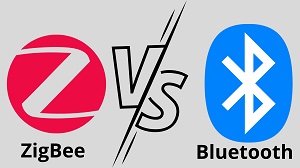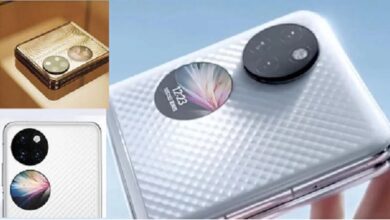Bluetooth vs ZigBee | Difference Between ZigBee And Bluetooth

- What is ZigBee?
- What is Bluetooth?
- Bluetooth vs ZigBee
Bluetooth vs ZigBee– Wireless technology is becoming more popular among netizens as technology progresses. Transferring files and data from one device to another without direct or connected communication necessitates technological advancement. As a result, technologies like Bluetooth and ZigBee emerged.
What is ZigBee?
Ii is a high-level communication protocol. It is mostly used for automation in the establishment of PANs, or personal area networks, using small or low-power digital devices such as radios.
It’s also used to get data from medical devices especially when bandwidth and power are limited. It was created specifically for small-scale projects that do not require a wired connection and instead rely on a wireless connection.
Read Also: WiFi vs LiFi | Difference Between WiFi And LiFi
As a result, it can only be used in the personal area or close by. As a result, it is distinguished by low data rates and power consumption, as well as a wireless and ad hoc network.
What is Bluetooth?
It is most commonly used to transfer data between two fixed sites. One could be a smartphone, while the other could be a laptop.
PANs, also known as personal area networks, are used to convey information across small distances using UHF radio waves.
This is a short-range wireless technology that can be used as an alternative to data lines such as RS-232.
Bluetooth vs ZigBee
| Specifications | Bluetooth | ZigBee |
| IEEE Standard | 802.15.1 | 802.15.4 |
| RF Frequency Band | ISM bands by country are shown below: 2400 to 2483.5MHz in the United States and Europe, 2471 to 2479MHz in Japan, 2445 to 2475MHz in France, and 2446.5 to 2483.5MHz in Spain | In Europe, 868MHz 915 MHz in Australia/the United States, 2450 MHz globally |
| Channel Spacing | 1 MHz | 5 MHz, Occupied bandwidth is about 2 MHz |
| No. of Channels | 79 in the US and Europe, 23 in Japan, France, and Spain | The 2450 MHz band has 16 channels, the 915 MHz band has 10 channels, and the 868 MHz frequency has one channel |
| Distance | Based on These device power class, 10 cm to 100 meters | 10 to 100 meters, depending on transmission power, antenna, and other factors |
| Data rate | Bluetooth 1.0 devices have a data rate of roughly 1 Mbps, while Bluetooth 2.0 devices have a data rate of up to 3 Mbps | Bluetooth 1.0 devices have a data rate of roughly 1 Mbps, while Bluetooth 2.0 devices have a data rate of up to 3 Mbps |
| Modulation | GFSK (Gaussian Frequency Shift Keying) | DSSS is used to transform bits/symbols to chips in BPSK (Binary Phase Shift Keying) for 868/915 MHz and OQPSK (Orthogonal QPSK) for 2450 MHz |
| Protocol Stack | Core protocols (baseband layer, Link Manager Protocol, Logical Link Control and Adaptation Protocol, Service Discovery Protocol), cable replacement protocol layer (RFCOMM) Control Specification for Telephony Binary PPP, TCP, UDP, IP, OBEX, WAE/WAP are examples of existing protocols. | Physical, MAC, network, security, and application layers |
| Frequency Hopping | Yes | No |
| Security | 128 bit AES | 128 bit AES |
| Medium Access scheme | FH-TDD-TDMA | CSMA/CA |
| Topology | In one piconet zone, a device may communicate with around 7 devices. | Topologies such as star, tree, and mesh are supported. Master-slave combinations are used in ZigBee. There are a total of 65536 network nodes. |
| Applications | It is an alternative to using cable for data communication. Home automation, consumer electronics, smart energy, and automotive are some of the applications. | It is mostly utilized for monitoring and control purposes. Home automation, consumer electronics, smart energy, and automotive are some of the applications. |
Takeaway
The similarities between ZigBee and Bluetooth are numerous. Both Bluetooth and ZigBee operate on the same frequency, which is 2.4 GHz.
Both of them are also members of IEEE 802.15, the wireless and private area network standard. However, there are numerous differences in technology and application between these two wireless technologies, Bluetooth and ZigBee.
The signal has a range of up to 10 meters. Furthermore, ZigBee has a range of up to 100 meters. As a result, choosing to use Bluetooth or ZigBee is a personal preference.

Q- Is ZigBee or Bluetooth the better option?
A- In general, It prioritizes automation, whereas Bluetooth stresses mobile device communication in close proximity. It is a low-power wireless technology that employs tiny packet devices to transmit data. Bluetooth, on the other hand, has higher power consumption and data speeds for large packet devices. The frequency range is roughly 2.4GHz.
Q- Is ZigBee comparable to Bluetooth?
A- Because it is a local area network (LAN), it is not intended to connect to devices in the immediate vicinity of the user, unlike Bluetooth LE. It instead connects to devices that require more range. As a result, it’s an excellent choice for home automation and smart lighting.
Q- Why is ZigBee preferable to Wi-Fi and Bluetooth?
A- When compared to Wi-Fi, the network is more dependable. In comparison to ZigBee, the WiFi network is less dependable. It requires low bandwidth, but it is usually larger than Bluetooth’s capacity. It necessitates a lot of bandwidth.
Q- Is ZigBee or Bluetooth more expensive?
A- These devices are frequently more expensive, however this is due to the fact that they contain a few unique and valuable characteristics. Unlike typical Wi-Fi or Bluetooth protocols, the protocol uses a distinct type of network with some significant variations from what you’re used to.
Q- Is ZigBee used by mobile phones?
A- Android is one of the most popular smartphone and tablet operating systems; It is the home automation standard and will play a key part in future WPAN deployments. Enabling this connection on Android allows its applications to take advantage of the Android phone’s rich network and attractive display.
Q- Is ZigBee compatible with Wi-Fi?
A- ZigBee and Z-Wave are low-power mesh networks that enable devices to connect without the use of Wi-Fi or Bluetooth. However, in order to send and receive signals between devices, both Z-Wave and ZigBee protocols require a separate receiver on your WiFi network.






